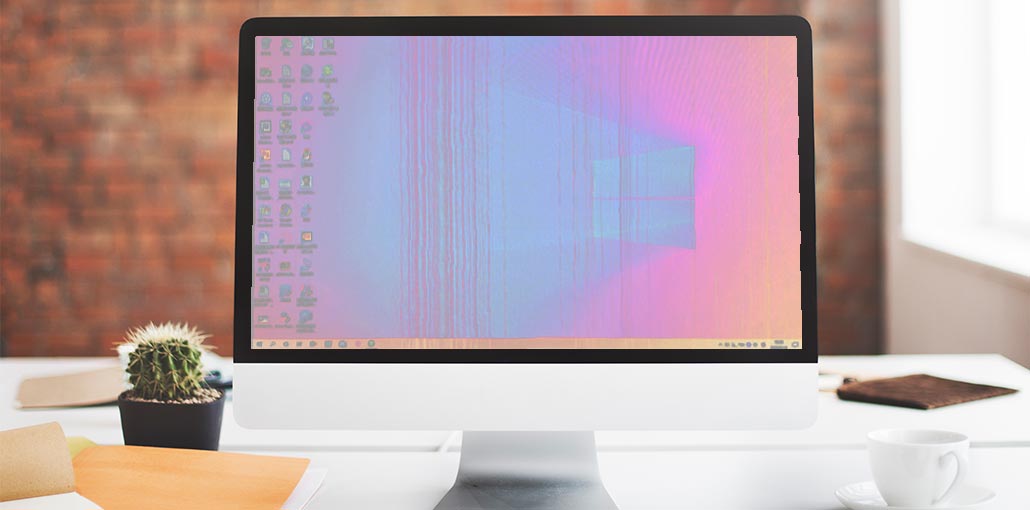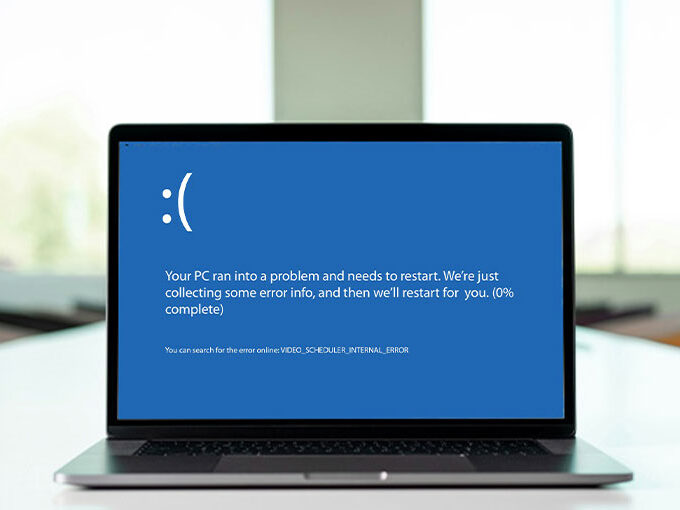Do you find it frustrating and disorienting trying to work when the screen is always moving? It’s not just you! A lot of people face computer screen flickering issues.
Don’t fret – it’s a well-known problem which is easily fixable. In this blog, we’ll explore why is my computer screen flickering and how to fix this issue. There could be multiple reasons, from hardware issues to software complications, each may contribute.
Are you experiencing monitor flickering issues, and want a Solution to repair it to optimize the Performance of your System? Check this out now
What is Screen Flickering?
Screen flickering refers to the continuous and rapid flashing of computer and web page screens, creating discomfort or distraction for the user. It could result from several reasons, including hardware problems, outdated drivers, software incompatibilities, or defective cables, resulting in screen flickering.
Also read: White Dots on iPad Screen? Here’s The Reason and How to Fix It
Why is My PC Screen Flickering? Common Causes
Although flickering isn’t pleasant, it is essential to figure out the root of the problem to determine the ideal solution for your PC. Let’s examine several of the reasons for pc screen flickering.
Hardware Issues:
Flickering computers often stem from hardware issues related to display cards or video adapters. If one of these components becomes damaged through wear-and-tear or defective altogether, it sends out incorrect signals that cause the monitor screen flickering.
Power Supply Issues:
A subpar or low-quality PSU might not have enough power to run all components of your PC. This can cause instability within certain components of the display adapter and cause flickering effects on your display screen.
Software Problems
Environment-related issues and software issues, like heat, may affect the way your computer functions and cause your screen to flash. In addition, the high temperatures caused by poor ventilation inside your case can cause the CPU to overheat, reducing performance.
Display Settings
Displays that flicker may also be caused by incorrect settings in Windows that you have configured on your computer. If multiple monitors are connected and active, some applications could try using one over another, or your refresh rate may not match up with your resolution settings.
How to Fix a Computer Screen Flickering?
Now that we have a better understanding of the potential causes for the computer screen flickering, we can look at how to solve this issue.
Check the Cables
The first step is to examine your connections and cables. Check that all cables are properly connected, including those that power cables. If any of them appear damaged or broken, replace them with new ones. Don’t do anything else.
Update Your Drivers
If checking your cables doesn’t assist, you need to upgrade your drivers. The drivers are available on the official website of the manufacturer of your particular device or operating system – for instance, if you are using Windows 10, then you must visit their site and search for the most recent driver updates and complete update.
Update Incompatible Software
Certain third-party applications have been found to cause the computer screen to flicker when running Windows 10. This includes Norton AV, iCloud, and IDT Audio. If you find any apps compatible with your system to be incompatible, or any third-party applications you feel might not work optimally, updating their software could be wise.
Updates can usually be found for apps on manufacturer sites, and once applied, they can often resolve laptop screen flickering issues.
Update Your Graphics Card
Another way is to upgrade the driver for your graphics card, ensuring optimal performance and compatibility with new software applications. Doing this simple step often resolves screen flickering issues and increases overall computer stability and speed.
Also read: Black Line on Monitor? Here’s How to Fix It
Adjust Screen Refresh Rate
If your screen keeps flickering, adjusting its refresh rate could help solve this issue.
Select Start from the menu, then select Settings.
Select System->Display, and then select and click the Advanced display settings option.
Choose a lower or a higher refresh rate. Verify that the computer screen flickering problem has been solved.
Disable GPU Acceleration
You can try turning off hardware acceleration to fix your laptop’s screen flickering problem. Just go to Start → Settings → System → Display, then scroll down and open Graphics settings. There, switch off Hardware-accelerated GPU scheduling. Restart your laptop and see if the flickering is gone.
Seek Professional Assistance
If the flickering continues after efforts to solve surface flickering screen have failed, bringing your computer in for professional service can help identify and resolve it, regardless of its cause – hardware, software, or otherwise. Experienced technicians possess both the knowledge and tools needed to identify and fix this type of computer screen flickering issue quickly, ensuring your laptop runs efficiently without display issues.
Ending Point
Conclusion: Ultimately, computer screen flickering usually stems from display settings, outdated drivers or hardware acceleration issues. Simple solutions include updating graphics drivers or cables, or disabling hardware acceleration if the problem persists. Otherwise, it could signal deeper hardware faults that require professional repair services to correct.
FAQs about Screen Flickering
How do I fix screen flickering on Windows 10/11?
You can fix it by updating your graphics drivers, adjusting the refresh rate, disabling hardware acceleration, or checking the display cable connection. Restarting in Safe Mode can also help identify if it’s a driver or hardware issue.
Can a virus cause screen flickering?
Yes, in rare cases. Malware or corrupted system files can interfere with graphics performance and cause flickering. Running a full system scan with updated antivirus software is recommended.
Is screen flickering a hardware or software problem?
It can be both. Software issues like outdated drivers or wrong settings are common causes. But if flickering persists after fixes, it might point to faulty hardware such as the GPU, monitor, or cable.
How do I stop my laptop screen from flickering?
Turn off hardware acceleration, update your graphics card driver, adjust display settings, and check for Windows updates. If the issue continues, connect your laptop to an external monitor to see if it’s a screen or GPU problem.










Leave a comment